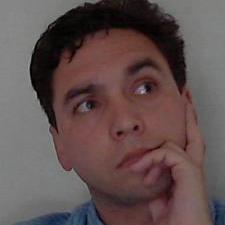

Featured Review:
Great Tutor!
Carly, 49 lessons with JordanJordan has been fantastic at helping me understand calculus. Before working with him I felt like there was no chance I was going to be able to understand calculus. Jordan has been extremely patient with me and continues to teach me how to work through the problems not just explaining how to do them but the reasons behind why it works the way it does. He is a fantastic tutor and I recommend him to anyone looking for help in math.
Prior to receiving my B.S.E in Engineering Physics from the University of Michigan College of Engineering I spent 3 years tutoring my peers in precalculus, calculus I & II, differential...
Loading...
Great Tutor!
Jordan has been fantastic at helping me understand calculus. Before working with him I felt like there was no chance I was going to be able to understand calculus. Jordan has been extremely patient with me and continues to teach me how to work through the problems not just explaining how to do them but the reasons behind why it works the way it does. He is a fantastic tutor and I recommend him to anyone looking for help in math.
Carly, 49 lessons with Jordan
Patient and knowledgeable
I’ve worked with Jordan on college-level Calculus, we’re now up to Calc III and he’s super helpful! He’s terrific in session, and creates a summary of key points in Wyzant after. If you need help with more advanced math, he’s your tutor.
Raphael , 42 lessons with Jordan
Great tutor
Jordan works really well with my son. He was very focused and they got through a lot of material. In the test following their session, my son got his best grade yet and feels a lot more confident. Thanks to Jordan.
Scott , 5 lessons with Jordan
Made Material Clear and Easy to Understand
Jordan was very good and walking my son through AP Physics material and presenting the material to him in a way that he could understand. My son missed several days this term due to illness, but thanks to Jordan, he excelled in physics and even got some great sessions that helped him with AP calc.
Stephhanie, 7 lessons with Jordan
Patient and Kind
My daughter needed this first session to be more about developing a comfort level and rapport with Jordan. There was more getting to know you conversation and less math but I was impressed by how patient and open Jordan was. He recognized that my scholar needed a bit of a runway before she could relax and focus on the work.
Cheryl, 3 lessons with Jordan
auspicious start!
My HS sophomore has been pretty apathetic about school; she tends to second guess herself and lacks confidence in her abilities. Jordan put her at ease, listened to her concerns and followed her lead. She seemed to have a few “aha” moments, so I think they are off to a good start!
Beth, 1 lesson with Jordan
great at explaining
Jordan was very helpful preparing my son for an Algebra test. My son said he was great at explaining concepts. We only had one session, but hope to work with Jordan on a regular basis.
Robin, 2 lessons with Jordan
great tutor
Jordan is very patient and intelligent. He was very helpful with homeowner concepts for class. Will definitely be working with Jordan again.
Eve, 2 lessons with Jordan
Provides great explanations
Provided tutoring in preparation for an honor physics final exam. The session helped my child become comfortable with a topic that was once an area of weakness.
Young, 2 lessons with Jordan
Excellent instructor
My son loved this lesson! Thank you, Jordan, for another terrific lesson. He is learning so much. Happy boy, happy Mom.
Jessica, 36 lessons with Jordan